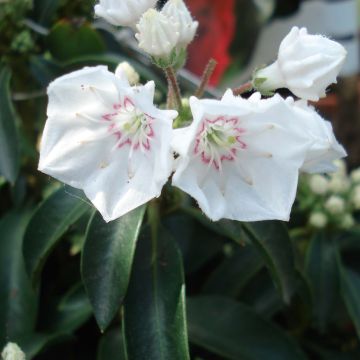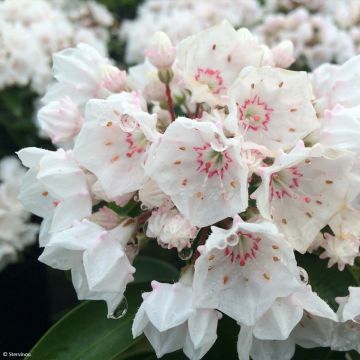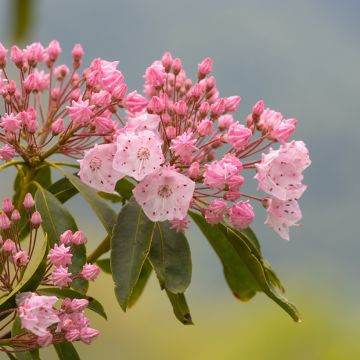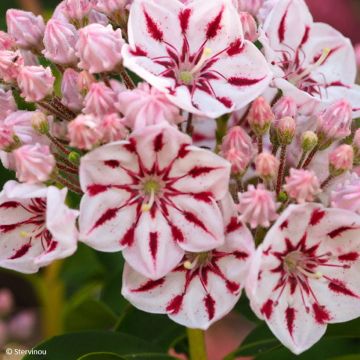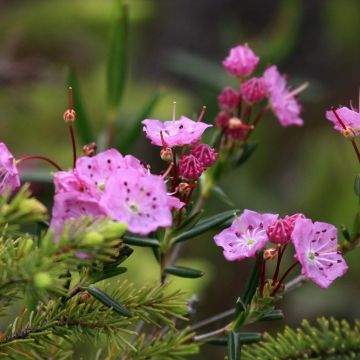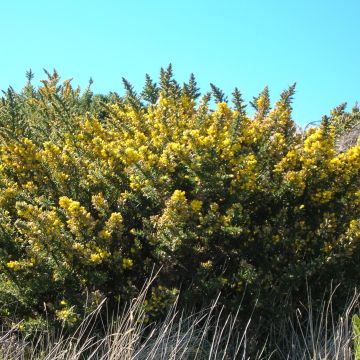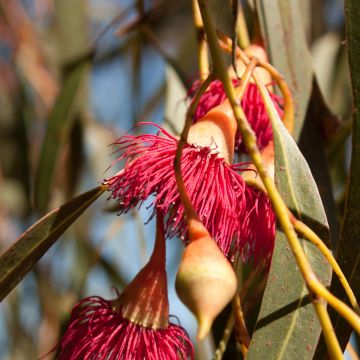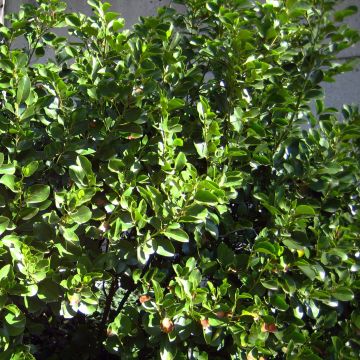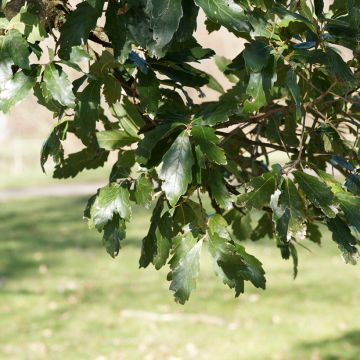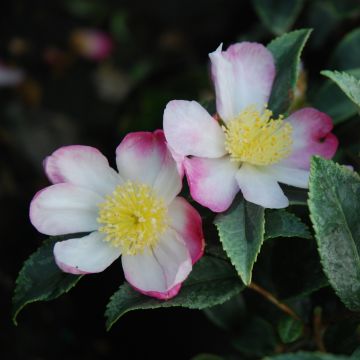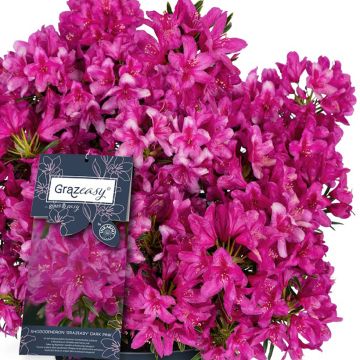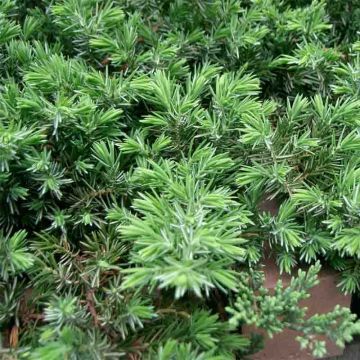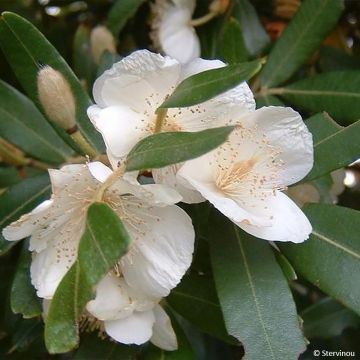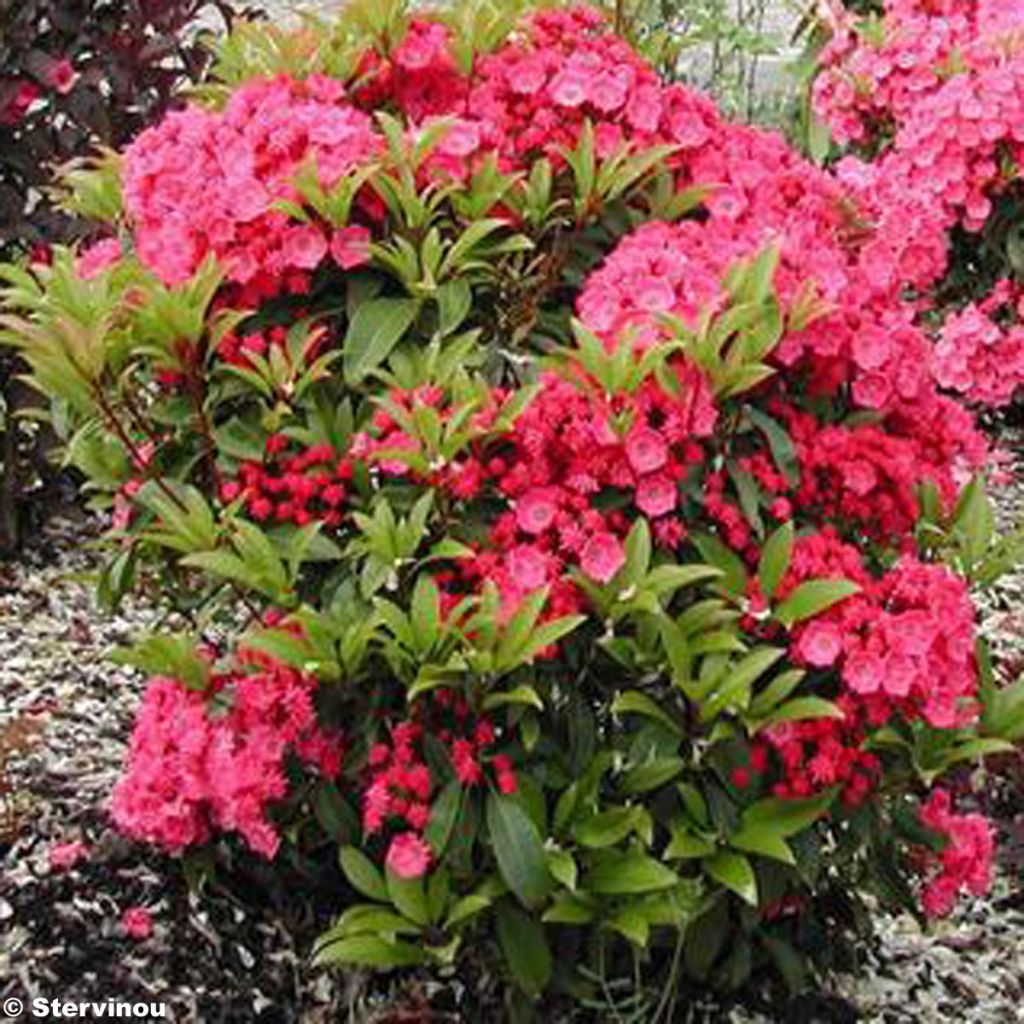

Kalmia latifolia Pink Charm - Laurier des montagnes rose riche
Kalmia latifolia Pink Charm - Mountain Laurel
Kalmia latifolia Pink Charm
Mountain Laurel, Calico Bush, Spoonwood, American Mountain Laurel, Broad-leaved Kalmia
This plant carries a 24 months recovery warranty
More information
We guarantee the quality of our plants for a full growing cycle, and will replace at our expense any plant that fails to recover under normal climatic and planting conditions.
From €7.90 for pickup delivery and €6.90 for home delivery
Express home delivery from €8.90.

Does this plant fit my garden?
Set up your Plantfit profile →
Description
Kalmia latifolia Pink Charm, also known as Mountain Laurel, is a delightful dwarf shrub of heathland, with a bushy and dense habit, and matte green evergreen foliage. In May-June, it exhibits abundant flowering with dark pink in buds, and rich pink flowers. The spectacle is simply stunning. It flowers even when young and remains elegant all year round.
Kalmia latifolia, native to the mountains of eastern North America, and also called Mountain Laurel or American Laurel, belongs to the family of Ericaceae, like Heather and Rhododendron. This Pink Charm broad-leaf Kalmia is a small-sized evergreen bush, not exceeding 1 meter (3 feet 4 inches) in all directions, and of slow growth. The adult size is reached in ten years, the young plant can live 50 years. Its well-branched trunk gives it a bushy, spreading, and somewhat erect habit. Its evergreen foliage, matte dark green, with a lighter underside, is composed of small concave, tough and thick, alternate and lanceolate leaves (like those of Rhododendrons or Laurels), thus ensuring a very decorative interest all year round. This plant is most spectacular at the end of spring, in May-June, when it is entirely covered with intensely pink flowers. Each branch, tinged with purple, carries terminal clusters (corymbs) of small rich pink flowers, in the form of campanulate 5-sided corollas, very flared, 2 to 2.5 cm (0.8 to 1 in) in diameter, whose centre is circled with dark red. Each flower carries 10 purple stamens attached to the petals. The flowers do not all blooming together, the corymbs present astonishing contrasts between the veined, dark pink flower buds, and the already open flowers. After flowering, if they have not fallen, the flowers give way to fruits in the form of brown capsules, which last all winter.
Kalmias are unjustly unknown. Their flowers are enchanting, they are particularly hardy heathland bushes that should be planted in semi-shade, in moist and humus-rich soil. Very decorative and compact, Kalmia Pink Charm will work wonders planted in the garden, where it will beautifully highlight all the surrounding plants! A wide variety of uses are possible for its installation. It will be perfect to accompany and highlight your other ericaceous plants (Rhododendrons, Azaleas, Camellias, Heathers, Hydrangeas, Japanese Maples, Magnolias, Andromedas, Cyclamens…). It will work well in an informal hedge, in mixed shrub planting, added into a perennial bed, around a pond, or even planted as a specimen. This kalmia associates particularly well with Rhododendron canescens, Euonymus americana (the American spindle tree with purple in autumn), Dicentra eximia, Polystichum acrostichoides (a pretty fern), Gillenia trifoliata (excessively light) and Leucothoe axillaris with waffled and changing foliage. Due to its small size, it is also suitable for pots on balconies or patios, provided the soil is always kept damp and watered with non-calcareous water.
Properties:
Kalmia latifolia is a shrub which is entirely toxic to humans as well as for animals (dogs, cats, sheep, horses) when eaten, including its leaves, flowers, fruits and roots.
However, it is used in homeopathy for pain relief. In the past, its very hard wood was used to make many tools, including wooden spoons, hence its English nickname of Spoonwood.
Anecdote:
The denomination of the genus Kalmia, was chosen by Carl von Linnaeus, in honour of Pehr Kalm, famous Swedish botanist, who was one of the first to explore the flora in some parts of North America from 1747 to 1751.
The flower of the Kalmia latifolia is the emblem of the States of Connecticut and Pennsylvania.
Kalmia latifolia Pink Charm - Mountain Laurel in pictures
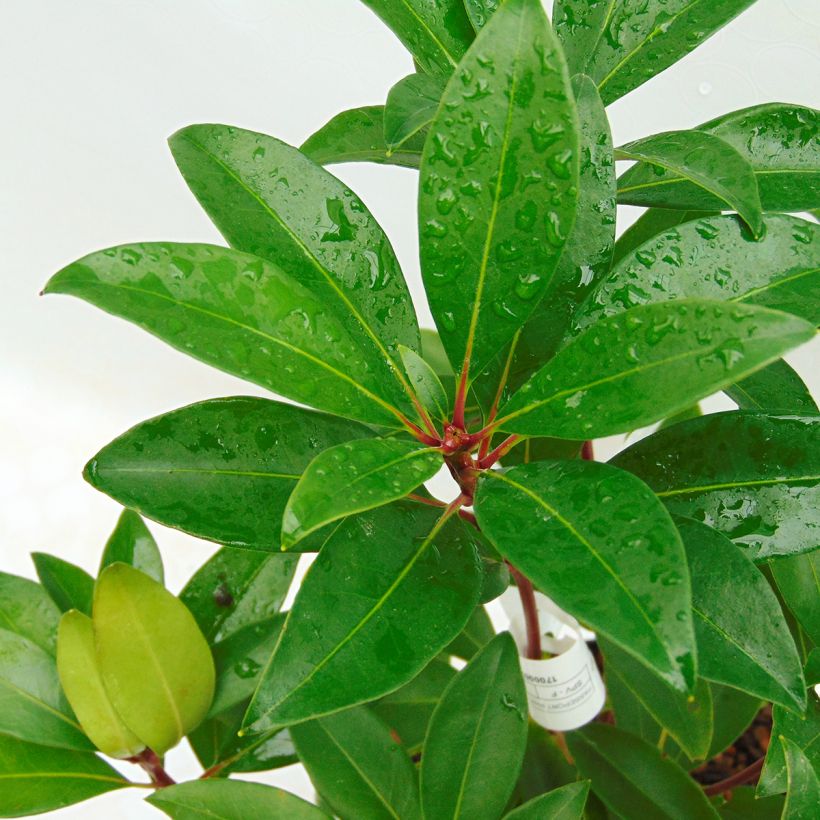

Plant habit
Flowering
Foliage
Botanical data
Kalmia
latifolia
Pink Charm
Ericaceae
Mountain Laurel, Calico Bush, Spoonwood, American Mountain Laurel, Broad-leaved Kalmia
North America
Other Kalmias
Planting and care
Kalmia latifolia Pink Charm is extremely hardy and can withstand very low temperatures, below -20 °C. It requires a semi-shaded position, in a humus-rich and fertile, acidic (without lime), well drained but damp soil. Plant in spring or autumn, avoiding periods of frost or high heat. Prepare a wide and deep pit, 50 cm (19.7 in) by 50 cm (19.7 in) so that your Kalmia can quickly establish itself. Regular watering (with rainwater if possible) in the first few weeks following planting is necessary to keep the soil moist and cool. A pine bark mulch at the base of the plant can be beneficial to protect the fine and superficial roots. Each spring, scratch the soil around the base of the plant and top with compost, ericaceous soil and mulch. The mountain laurel dislikes scorching situations and sweltering summers. It must be planted in such a way that it is shaded during the hottest hours of the day. During the summer period and especially in case of drought, regular watering (preferably with rain water) will be essential. This summer watering is particularly important as this is when flower buds are formed for the following spring. The mountain laurel, liking coolness and good humidity, will thrive in coastal or rainy climates. With its small size, it is well suited to pots on a patio or balcony but use a large pot and water well to avoid the soil from drying out. Apart from removing faded flowers, pruning of Kalmia latifolia Pink Charm is hardly necessary. Indeed, it may hinder the flowering for the following year, the flower buds forming at the ends of the branches. However, it is possible to remove dead wood and perform a very light prune to maintain a balanced habit of the dwarf Kalmia.
Planting period
Intended location
Care
-
, onOrder confirmed
Reply from on Promesse de fleurs
Evergreen shrubs
Haven't found what you were looking for?
Hardiness is the lowest winter temperature a plant can endure without suffering serious damage or even dying. However, hardiness is affected by location (a sheltered area, such as a patio), protection (winter cover) and soil type (hardiness is improved by well-drained soil).

Photo Sharing Terms & Conditions
In order to encourage gardeners to interact and share their experiences, Promesse de fleurs offers various media enabling content to be uploaded onto its Site - in particular via the ‘Photo sharing’ module.
The User agrees to refrain from:
- Posting any content that is illegal, prejudicial, insulting, racist, inciteful to hatred, revisionist, contrary to public decency, that infringes on privacy or on the privacy rights of third parties, in particular the publicity rights of persons and goods, intellectual property rights, or the right to privacy.
- Submitting content on behalf of a third party;
- Impersonate the identity of a third party and/or publish any personal information about a third party;
In general, the User undertakes to refrain from any unethical behaviour.
All Content (in particular text, comments, files, images, photos, videos, creative works, etc.), which may be subject to property or intellectual property rights, image or other private rights, shall remain the property of the User, subject to the limited rights granted by the terms of the licence granted by Promesse de fleurs as stated below. Users are at liberty to publish or not to publish such Content on the Site, notably via the ‘Photo Sharing’ facility, and accept that this Content shall be made public and freely accessible, notably on the Internet.
Users further acknowledge, undertake to have ,and guarantee that they hold all necessary rights and permissions to publish such material on the Site, in particular with regard to the legislation in force pertaining to any privacy, property, intellectual property, image, or contractual rights, or rights of any other nature. By publishing such Content on the Site, Users acknowledge accepting full liability as publishers of the Content within the meaning of the law, and grant Promesse de fleurs, free of charge, an inclusive, worldwide licence for the said Content for the entire duration of its publication, including all reproduction, representation, up/downloading, displaying, performing, transmission, and storage rights.
Users also grant permission for their name to be linked to the Content and accept that this link may not always be made available.
By engaging in posting material, Users consent to their Content becoming automatically accessible on the Internet, in particular on other sites and/or blogs and/or web pages of the Promesse de fleurs site, including in particular social pages and the Promesse de fleurs catalogue.
Users may secure the removal of entrusted content free of charge by issuing a simple request via our contact form.


































